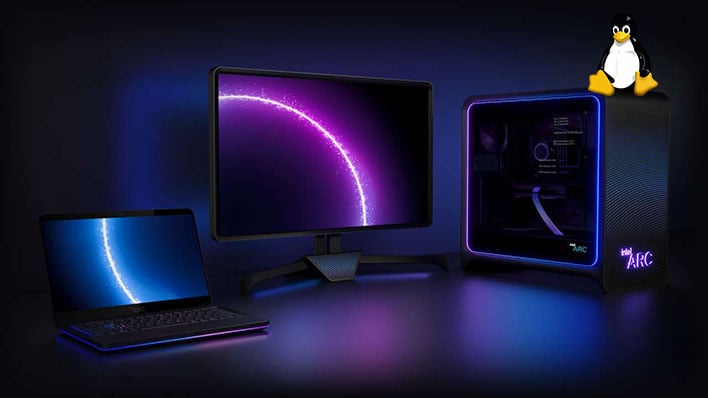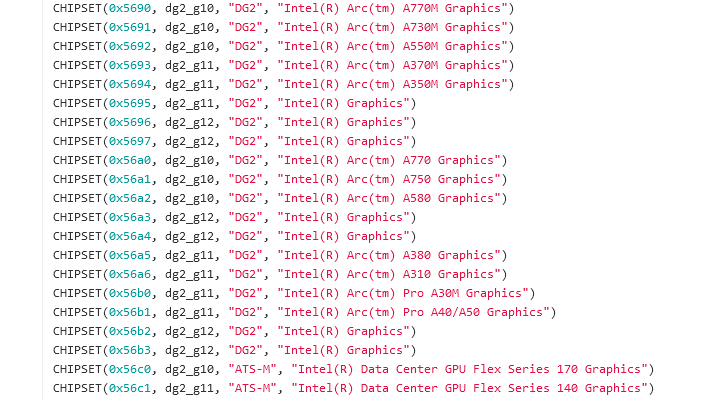Intel's Full Arc Graphics Lineup Breaks Cover In The Latest Mesa Linux Drivers

Last night's merge by Intel Mesa developer Jordan Justen did little more than fix names to the device IDs, but that's surprisingly useful when you're trying to troubleshoot a system. It's likely that this change was prompted by some faction at Intel giving the go-ahead to do so, as Intel creeps ever closer to the final release of the rest of its its Alchemist-based PC GPUs.

Screenshot thanks to @Kepler_L2 on Twitter.
Most of the SKUs in the list are familiar, of course. You'll be well-acquainted with the Arc A380 by now, and we've already tested (briefly) the Arc A370M laptop GPU. We've also recently reported on the Arc Pro graphics cards, as well as the just-launched Intel Data Center GPU Flex Series—the artists formerly known as Arctic Sound. Notably absent from the list is the long-rumored A780 (cue Ryan Shrout shouting "I told you!" in the distance).
However there are still a fair few unexplained "Intel(R) Graphics" entries in the list, including one based on ACM-G11 (the smaller Alchemist die, also known as DG2-128) and a bunch more based on an as-yet unknown "G12" chip. Based on the naming scheme, we'd expect that to be an even smaller Alchemist GPU. It may have been rumored in the past, but we haven't seen much about it lately.
Hopefully, this update means that Intel is in the final stages of getting its first-generation Arc GPUs to market. Speaking plainly, the cards are well late, and Alchemist's window of relevance is shrinking as we inch closer to next-gen products from NVIDIA and AMD. Intel's going to have to price the cards well below what it would have been able to even three months ago, and given the company's latest financials, that's not a great outcome for its first modern foray into discrete graphics.

